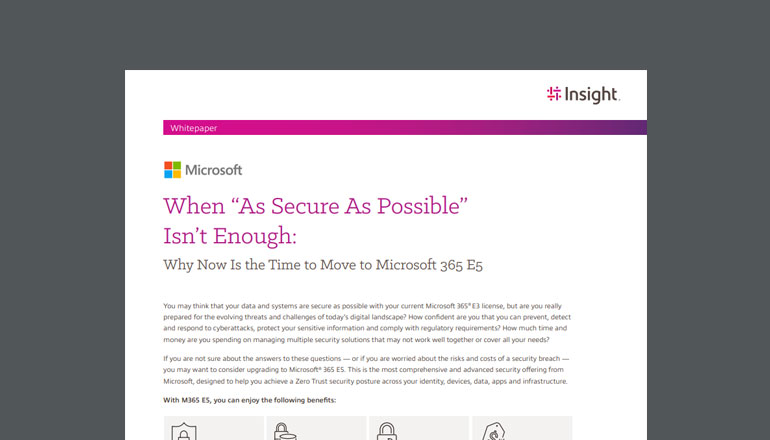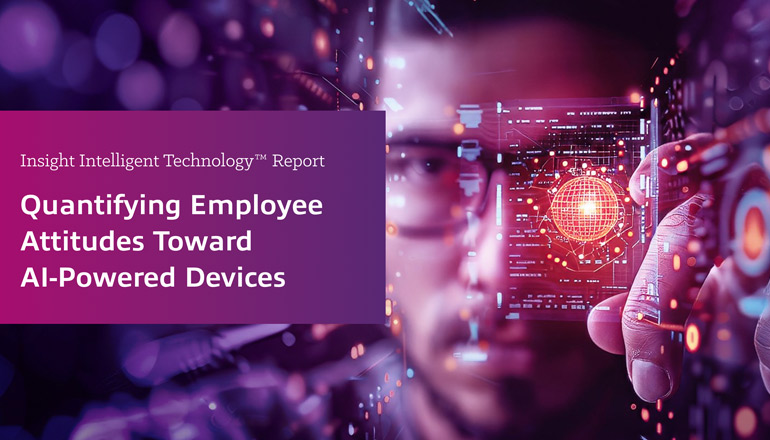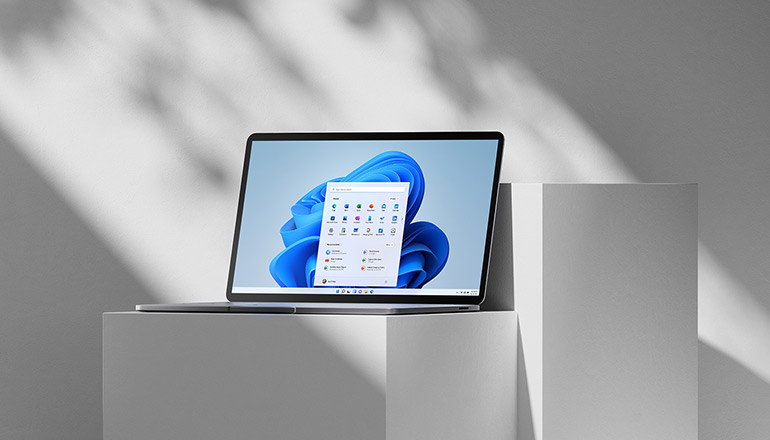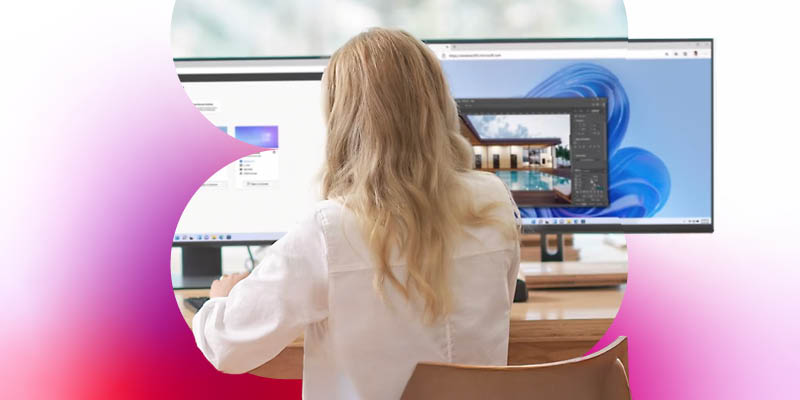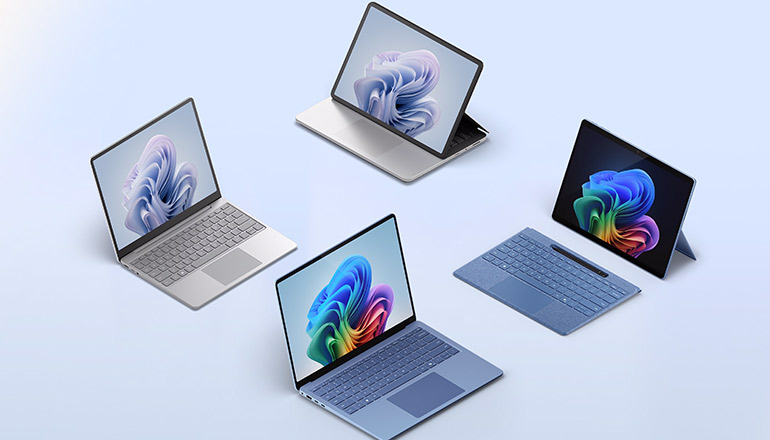Tech Journal The ABCs of Immersive Tech for Learning & Development
By David Gaw / 28 Jul 2021 / Topics: Devices Virtual Reality (VR) Featured

How augmented, virtual and mixed reality solutions are transforming on-the-job training and support — and how your business can start reaping the benefits
Immersive technology has lingered on the horizon of digital transformation for the past few years. But in 2020, the convergence of factors surrounding remote work, combined with the increased availability of immersive devices, created a significant turning point for adoption.
As occupancy and travel restrictions created new demands to support productivity, virtual collaboration and training from anywhere, organisations began to recognise the value of supplementing physical environments with digital access. Attitudes shifted from aspirational to practical.
Among those surveyed for Microsoft’s 2020–2021 report on mixed reality, 75% of healtchare organisations, 80% of manufacturers and 81% of retailers are now using immersive solutions in some capacity. More than half of healthcare organisations estimate their average Return on Investment (ROI) at 40% or more, while manufacturing estimates average around 30%, and those in retail average 15% or more.
Now these businesses are exploring ways to further capitalise on investments in immersive tech by exploring new use cases. For many, this has meant extending capabilities to Learning & Development (L&D).
Worldwide spending on augmented reality and virtual reality is forecast to accelerate out of the pandemic, growing from just over $12 billion this year to more than $72 billion in 2024.
An overview of immersive solutions
Before diving into the potential applications for immersive tech, it’s helpful to understand some of the terminology behind the technology. While often bucketed into the same broad category of discussion, immersive tech typically refers to three different types of solutions.
Augmented Reality (AR) overlays digital information onto the physical world. Common examples include Heads-Up Displays (HUDs) like those built into vehicle dashboards or delivered through wearables, such as Google Glass and RealWear. Augmented reality also extends to the use of mobile devices which combine input from cameras with digital elements to provide an augmented window to the world. Finally, immersive rooms augmented by projectors or LED boards to simulate various environments are also considered a form of AR.
Mixed reality (MR), exemplified by holographic devices such as Microsoft HoloLens 2 and Magic Leap, takes augmented reality a step further by giving digital representations a virtual position in physical space. This allows users to view and directly interact with digital elements as if they were real, three-dimensional objects — while also maintaining the ability to see and engage with the real world.
Virtual Reality (VR), on the other hand, provides a fully immersive digital experience. Systems such as the Oculus Quest 2 or HTC VIVE Focus block out any external visual input and replace it with a virtual environment.
Each of these technologies offer a unique set of capabilities which lend themselves to various use case.

A successful anywhere operations strategy should be people-centric and location-independent.
Benefits of immersive tech for L&D
IDC projects that by 2024, the top two commercial use cases for immersive technology will be training ($4.1 billion) and industrial maintenance ($4.1 billion).
The reasons for this are clear. To be effective, training must be accessible, relevant and engaging. Immersive technology represents an opportunity to improve these factors by integrating digital information into environments where it might not otherwise be available.
Those of us whose jobs primarily involve working with a computer may take for granted the benefit of tools such as built-in tutorials, search functions and on-demand communications. Information is always at our fingertips. But for those that work on a production floor, in the field, or serving customers or patients, this is rarely the case. Training and support for these positions often rely on information packets or videos which not only yield lower engagement and reduced retention, but are also more difficult to access on the job.
Immersive technology represents an opportunity to improve training and development by integrating digital information into environments where it might not otherwise be available.
Augmented and mixed reality bridge this gap by allowing information to be delivered when and where it’s needed. In training, users can interact directly with their environments while following along with instructions or visual aids through applications like Dynamics 365 Guides. This enables repair specialists to reference manuals without taking their hands off their work; production or lab technicians can review instructional guides on demand.
The same information can then be accessed on the job whenever questions arise. HoloLens 2 even provides the option to call for live, expert support using Remote Assist.
Beyond augmented training and support, virtual reality provides the option to immerse workers in environments which could not otherwise be easily or safely reproduced. Just as flight simulations have long been used by pilots, others are now adopting this model, including organisations in healthcare, law enforcement, mining and energy, and heavy manufacturing.
Even outside these fields, there’s a growing movement in corporate HR departments to use VR for training in soft skills such as customer service, compliance training, anti-harassment and conflict resolution.
Immersive tech provides a variety of tactics to support learning and development, improve time to competency and reduce on-the-job errors. Additionally, data from these solutions can be funneled back into learning management systems to further direct company training efforts. The integration of AR, VR and MR can even help to attract talent and improve retention as the increasingly tech-oriented Gen Z begins to enter the workforce.

Immersive technology is one of the top 10 training trends for 2021 — and beyond.
Considerations for getting started
Whether your organisation is just getting started with immersive technology, or you’re looking to extend applications into training and development, there are a few things to consider.
Hardware
Firstly, begin with the end in mind. Ensure that your intended application goes beyond the novelty of a device to deliver identifiable value to users and the business.
Depending on the intended use case, new hardware may or may not be necessary. Mobile applications that leverage computer vision may be a good way to get started with AR. Remote Assist for HoloLens is also available on mobile, providing the benefits of live expert support without the need to invest in new devices.
For those that have already invested in immersive devices, expanding to new use cases is as simple as adding some new content.
If you decide to procure new hardware, do your research to determine which devices are best suited for your goals and your environment. Various models are available for industrial applications or for use in clean rooms. You’ll also need to consider functionality in context, including minimum battery life, storage and checkout systems, as well as options for sanitising shared devices regularly.
IT considerations
Regardless of the approach you choose, be sure to align with your IT team early. You’ll need to have a clear understanding of the technical requirements, security considerations and approvals process for implementation.
Because some immersive devices may be ecosystem-specific, evaluating your infrastructure will be key to a smooth deployment. Assess your environment to make sure your preferred devices can be easily integrated into your existing ecosystem. An experienced consultant or SI can help to support this process.
Developing content
Once you’ve determined the method of delivery, you’ll need to develop the content for your immersive L&D program. Start by taking inventory of existing training materials; you may be able to leverage many of your existing lesson plans or visuals. Dynamics 365 Guides, for example, makes it easy to superimpose step-by-step instructions, videos or photos over a real-world environment.
Alternatively, if you’re looking to develop a new learning program, you’ll need to identify your learning objectives, storyboard lessons, contract and record videos, or design other visual components. An experienced consultant can also simplify or supplement this process.
Organisational change
The good news is, implementing immersive technology can be simple if done right. The key is to start small. Once you have the pieces in place, plan to launch a pilot program to demonstrate proof of value and begin building support among users and decision-makers. Communicate early and often about the rollout to drive excitement and encourage adoption.
Like any digital transformation, scaling immersive tech beyond the pilot phase will require a full lifecycle. You’ll need to have a plan in place for training users on new devices and software, and an ongoing strategy for addressing questions or concerns. Understand the culture of your organisation — Understand the culture of your organisation — identify potential areas of resistance to change to help users or leadership understand how immersive tech will make life easier. Finally, capture lessons learned along the way and build success stories to encourage implementation elsewhere in your organisation.
Value beyond the screen
Whether applied to learning and development, maintenance and repair, collaboration or product design — immersive technology provides an opportunity to improve effectiveness by bringing digital information to the foreground of the real world.
In the next few years as technical capabilities consistently improve, AR, VR and MR solutions will continue to become smaller, faster, more powerful and less costly. This trend of democratisation will drive the potential for new use cases and greater business value.


